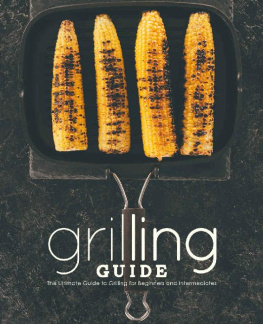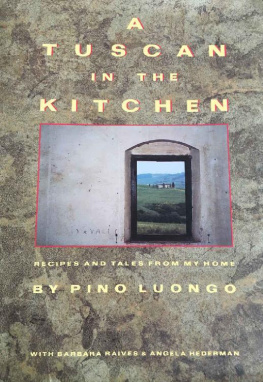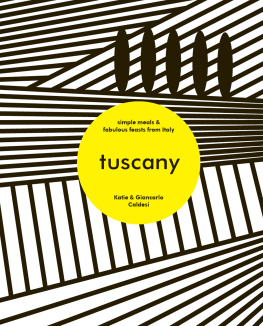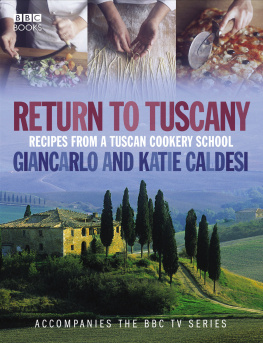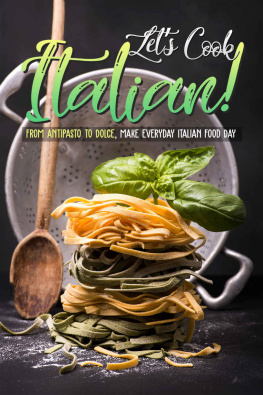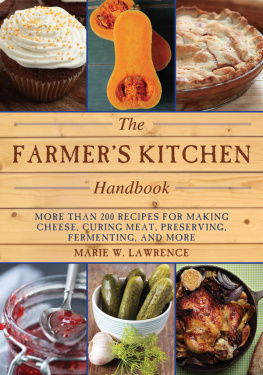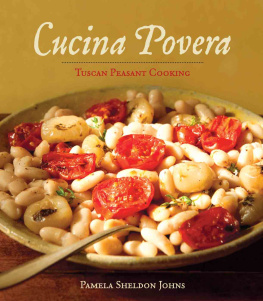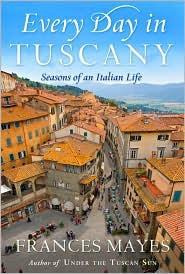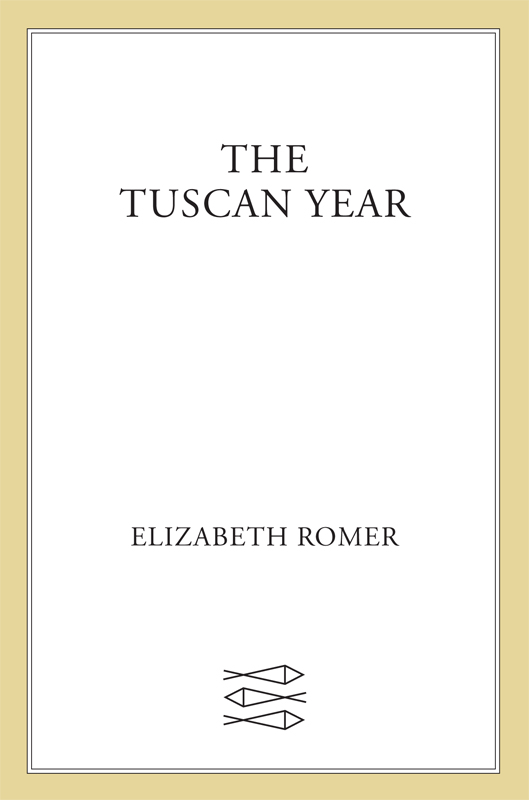
The author and publisher have provided this e-book to you for your personal use only. You may not make this e-book publicly available in any way. Copyright infringement is against the law. If you believe the copy of this e-book you are reading infringes on the authors copyright, please notify the publisher at: us.macmillanusa.com/piracy.
CONTENTS
Silvanas kitchen pigs and prosciutto salame, cotechino and other sausages gnocchi and rag beef: stews and steaks
Silvanas garden herbs minestrone and minestre wild vegetables and salads tobacco and the moon mangiafagioli carnival cakes ballo in maschera
Vines and sheep making the cheese: pecorino, ravigiolo, ricotta attic store-rooms cooking with cheese
Priests and feasts fresh garlic blessed eggs green spring Easter lamb and macaroons artichokes
Zappatura feeding the farmhands pasta trout baccal and stoccafissa pots of basil
Tuscans and Umbrians beans and truffles wedding feast cherries and camomilla herbs at the full moon mangiare in bianco
High summer threshing the corn merenda al fresco harvest feasts cooking with the stone oven
The daily bread ancient recipes frying flowers pansanella tomato preserves friends from Rome: new dishes
Autumn hunting; pheasant, other game and fieldfare funghi: passions and poisons porcini and chanterelles ovole and pratolini
Frosts and harvests vendemmia wine and wine-making punch and chestnuts vin santo polenta family Sunday
Chestnut woods mousetraps fried cakes and baked apples schiacciata on the pannaio wild boar: hunting and cooking the priest in the bed
Planting trees and logging the olive harvest olives and their oil fettunta and pinzimonio Christmas feasts tortellini and turkey cardoons zabajone the years ending
Measurements ingredients herbs tomato preserves bread equipment
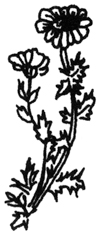
ACKNOWLEDGMENTS
Senza lamicizia e la generosit
della mia amica e insegnante
Silvana Cerotti
questo libro non sarebbe mai stato scritto
e vorrei ricordarla qui
con molto affetto e gratitudine.
Writing this book has been an important and enjoyable part of my life. I have derived great pleasure and satisfaction in learning from my friend Silvana Cerotti. We have spent many happy hours together, cooking, walking through the fields and simply chatting. Without her friendship and willingness to teach me, this book could never have been written and I am very grateful to her.
I should also like to thank my editors Vicky Hayward and Anne Dobell for their invaluable help. Caradoc King and my husband John Romer have also greatly helped me with their constant interest and encouragement.
Elizabeth Romer
Aiola 1984

INTRODUCTION
This is a book about the food grown and prepared by a family who live in a green and secret valley joining Umbria and Tuscany, two of the most historic and beautiful areas of Italy. It is is also about this familys everyday life and the culture of their region, for Tuscan cuisine is inextricably bound to the culture and personality of Tuscany and its people. I do not mean by Tuscan cuisine the elaborate food that one might eat in one of the regions many grand and elegant restaurants; I mean the sort of food that the waiter will eat when he goes home, the recipes that the grandmother of the chef might cook every day.
I fell in love with Italy in the traditional English manner when as an art student I travelled from Rome through the Tuscan cities to the north. I was dazzled by the art, the architecture and the landscape but even more by the Italians and their food. I loved the noisy market women of Rome who pressed bunches of cherries into my hands to taste before buying; the impressive arrays of cheeses in the food shops, the vast loaves of rough bread and the wine with which we filled our bottles from the big barrels kept in the dark depths of the tiny shops. It was not until some years later that, engrossed in a life of archaeology in the Middle East, my husband and I decided that the most logical place to have our home was between Egypt and England. So, armed with the small amount of money that in those days one was allowed to remove from Britain, we set off to find a house in some Mediterranean country. After dallying with a Turkish house in Greece we sailed for Italy and went straight to Tuscany.
My first impression of the house that was to be ours was of a grey stone building with a lichen-encrusted red-tiled roof standing above green and scented fields that were studded with the brightest scarlet poppies and blue cornflowers. The surrounding hills were green and lush with chestnut trees, and the valley was bisected by a dusty white road and a stream which we crossed by footbridge to reach the house. It was June and the air was full of the steady drone of bees. The crickets, disturbed by our footsteps, leapt before us as we walked through the meadows. After exploring the house we went up to see its owner at the fattoria, the home farm, and we walked into their huge dark kitchen. There was Silvana Cerotti with an enormous bowl of pasta in her arms serving food to the work people, about twenty or so they must have been. Immediately chairs were shuffled around and she insisted that we join them for lunch. It was the first of many meals that I have enjoyed at the Cerottis house.
Over the years we have become friends; I have spent many hours sitting in Silvanas kitchen watching her cook, walking with her through the fields where she has taught me which greenery can be picked to make an insalata di campo, a wild salad: and most enjoyable of our expeditions remain the funghi hunts in the woods where I have learnt which mushrooms are edible and which poisonous. When we first came to the valley Silvana did her ironing with an antiquated tall hollow iron that was filled with wood embers. One day when I wandered into the fattoria, she was using an electric one and chuckling with glee at the ease and convenience of the new iron. Then I realized that this old fashioned life could change: perhaps the next generation of country women would forget how to make cheese, maybe the prosciutto would be bought from the store and the old skills would be gradually forgotten. This is one reason why I started to write down all the things that I have learnt from Silvana; the other reason for writing this book is that her Tuscan way of life is so satisfying and her way of cooking so delicious that they deserve to be known by a greater number of people. When I told Silvana what I was doing she was delighted at the thought that other women in far off lands might read about her way of life.
Life in the valley is still firmly moulded by the past. The two regions that meet in the valley famed for their art, architecture, traditions, cuisine and landscape are the cradle of the classic image of Italian culture. Those who dwell here live in mediaeval houses, pray before altarpieces painted by Renaissance masters and prepare their food with the grace and balance instilled into them by hundreds of years of measured civilization. They use recipes handed down from mother to daughter, based on home-produced ingredients.
This ingrained tradition is typified in the life of the Cerotti household. Both Orlando and Silvana are strongly Tuscan in origin, coming from small enclosed communities in the remote mountain area between Cortona and Castiglion Fiorentino. They have one remaining young son, Sauro, the elder, Pietro, having been killed in a farming accident some years ago at the age of sixteen. A giant new tractor overturned on a slope and pinned him underneath. Silvana herself took him from the field and he is buried in the little churchyard on the hill above the house. Every Sunday she visits his grave with fresh flowers that she grows in a plot laid aside by the kitchen garden, and on the anniversary of his death priests come from Cortona to celebrate a memorial mass in the eighteenth-century chapel that stands next to the house. She makes them a splendid lunch and it is a comforting occasion.


